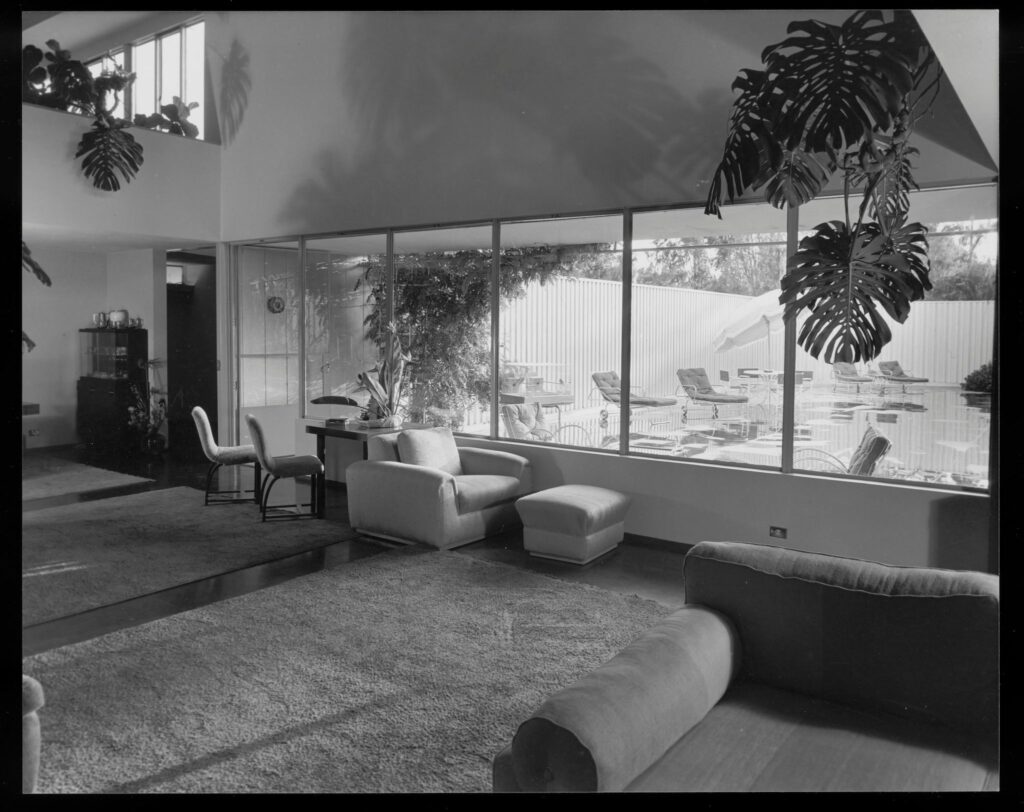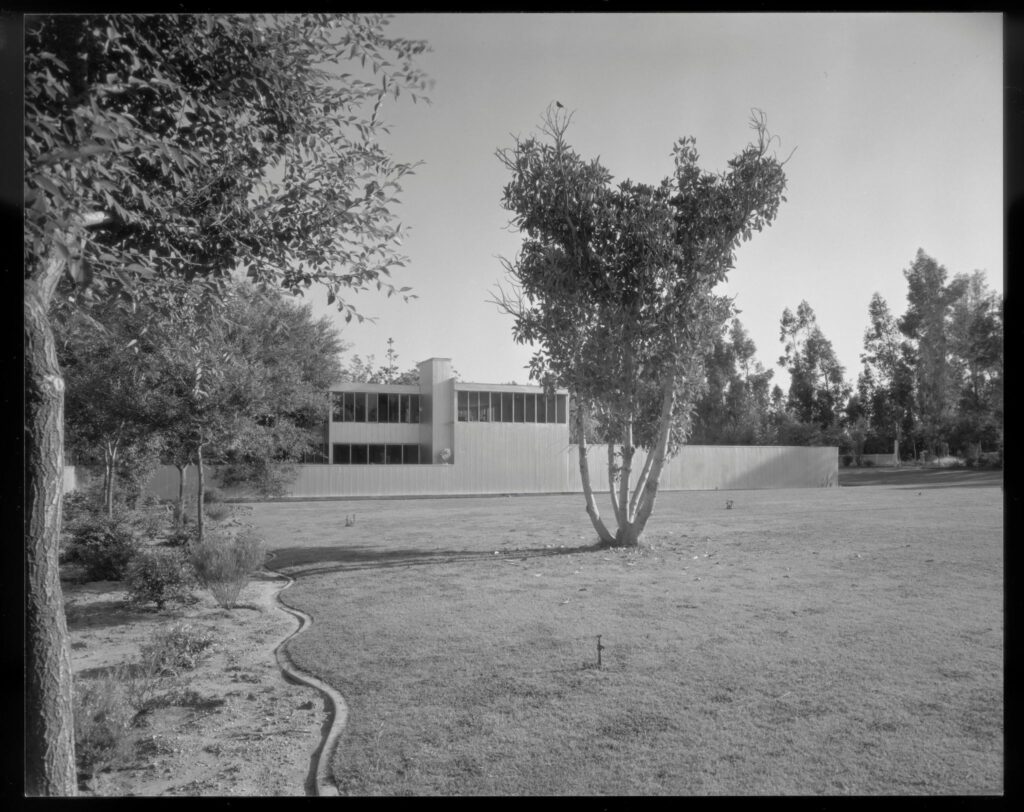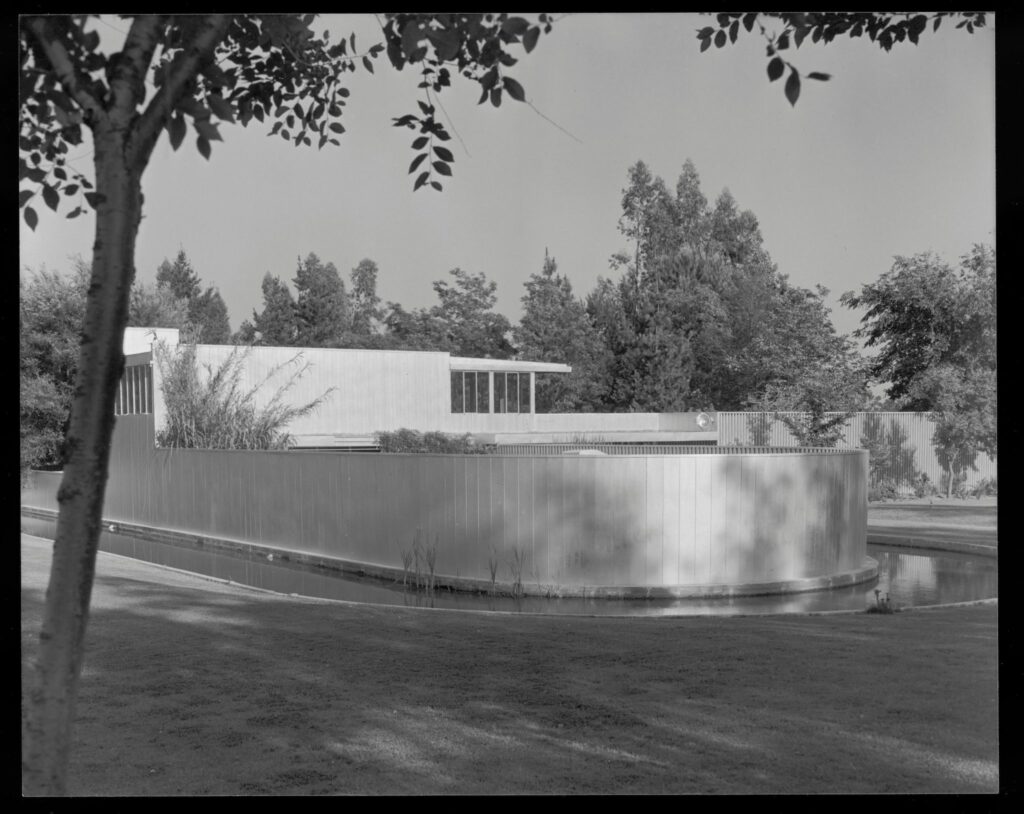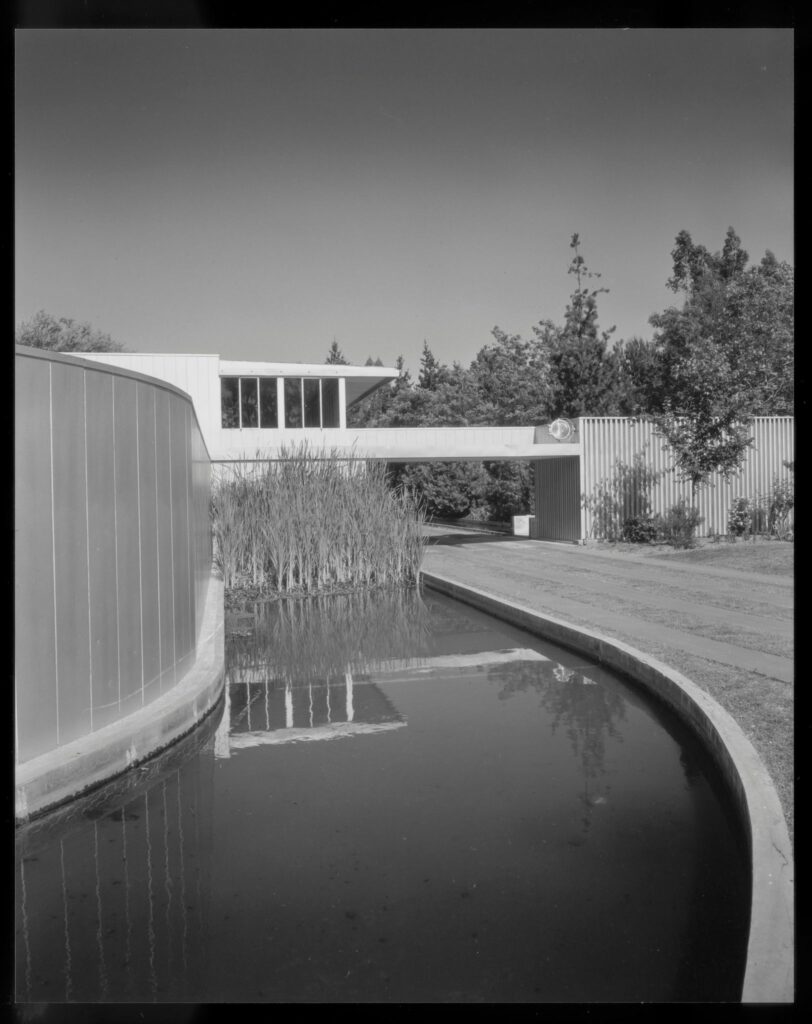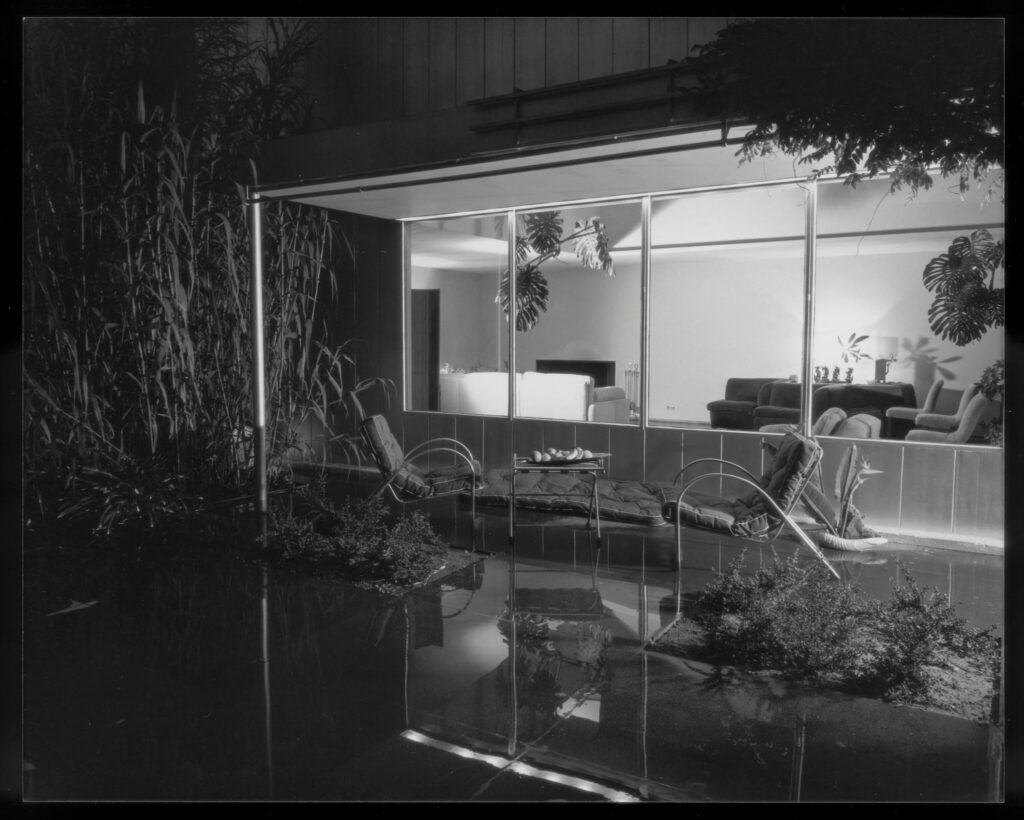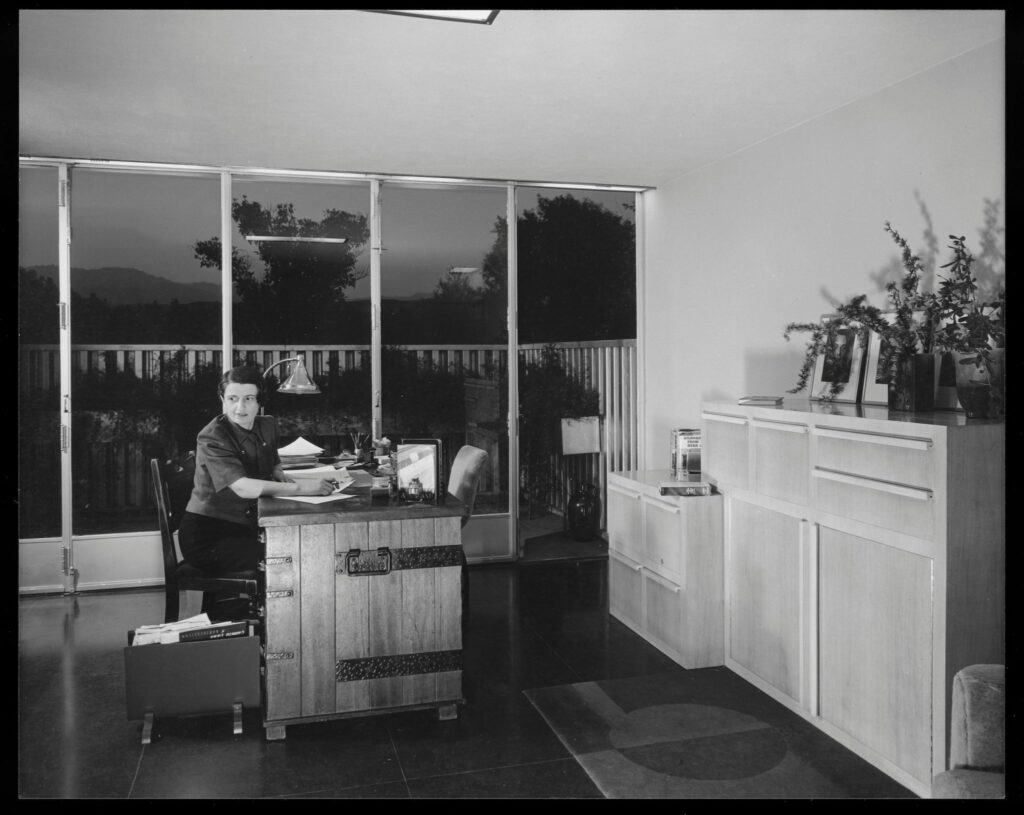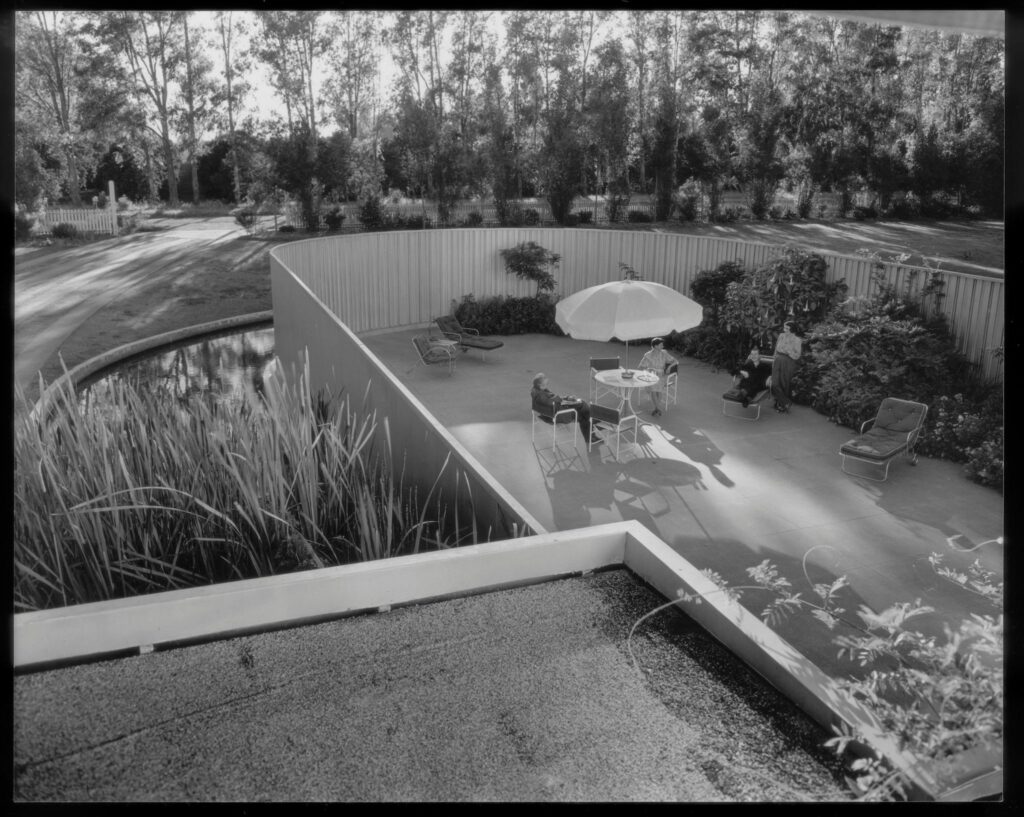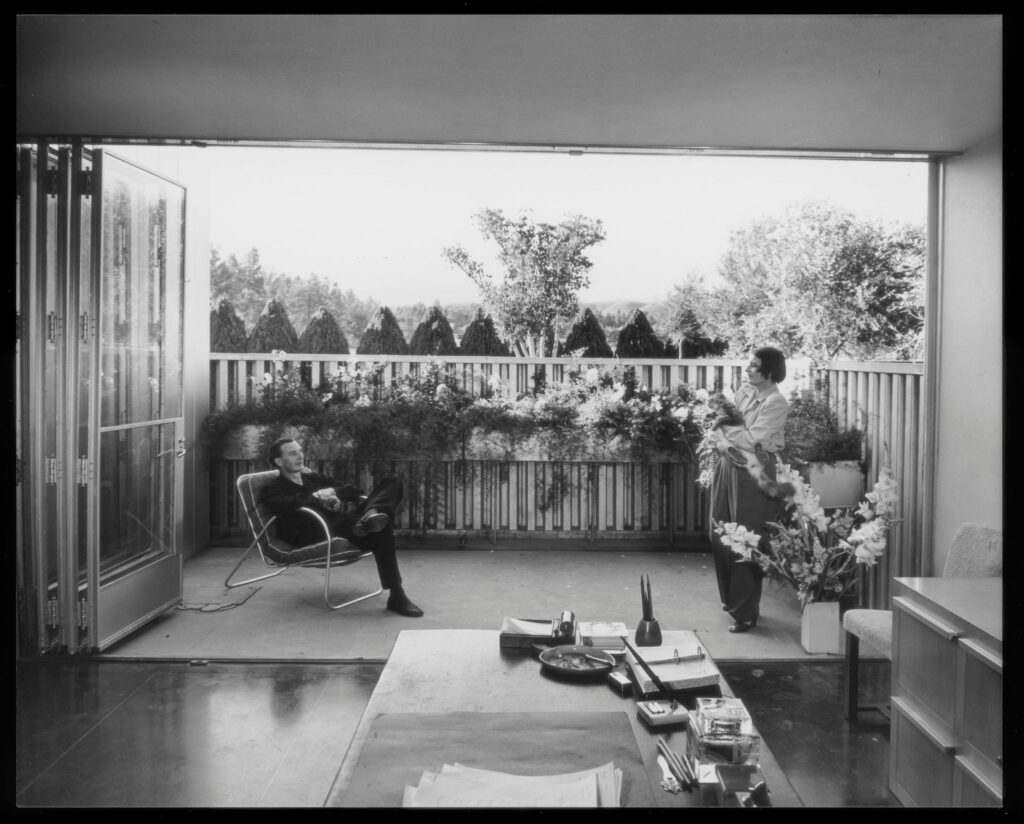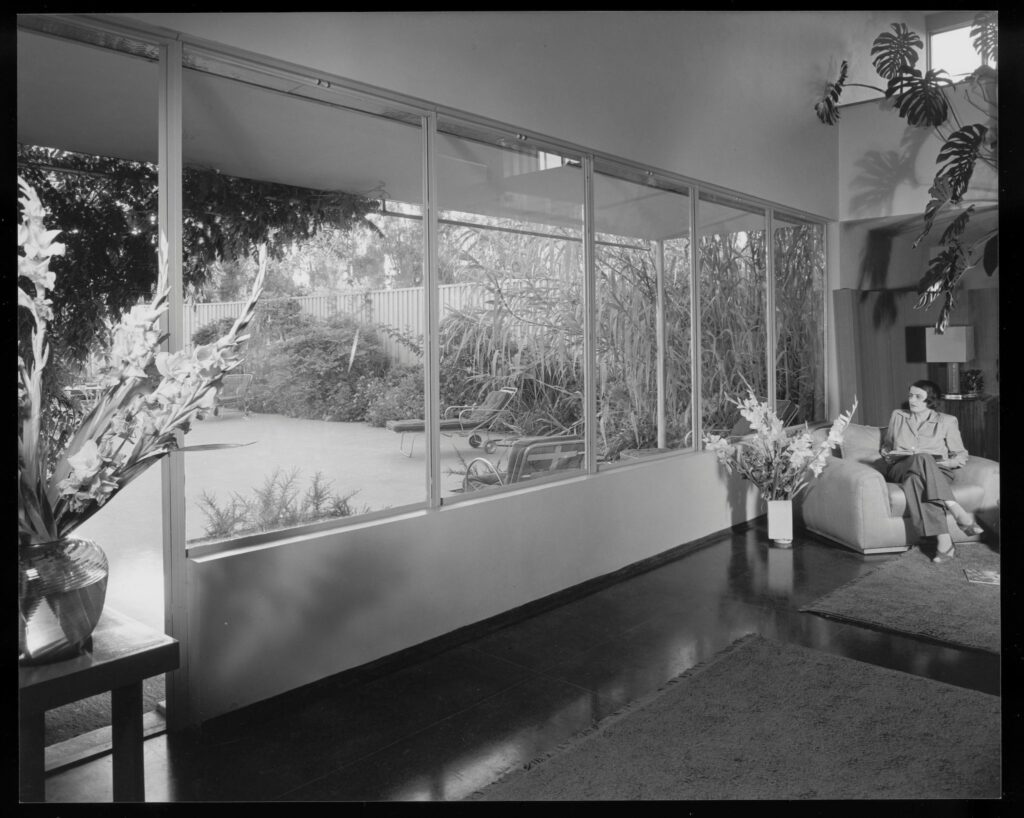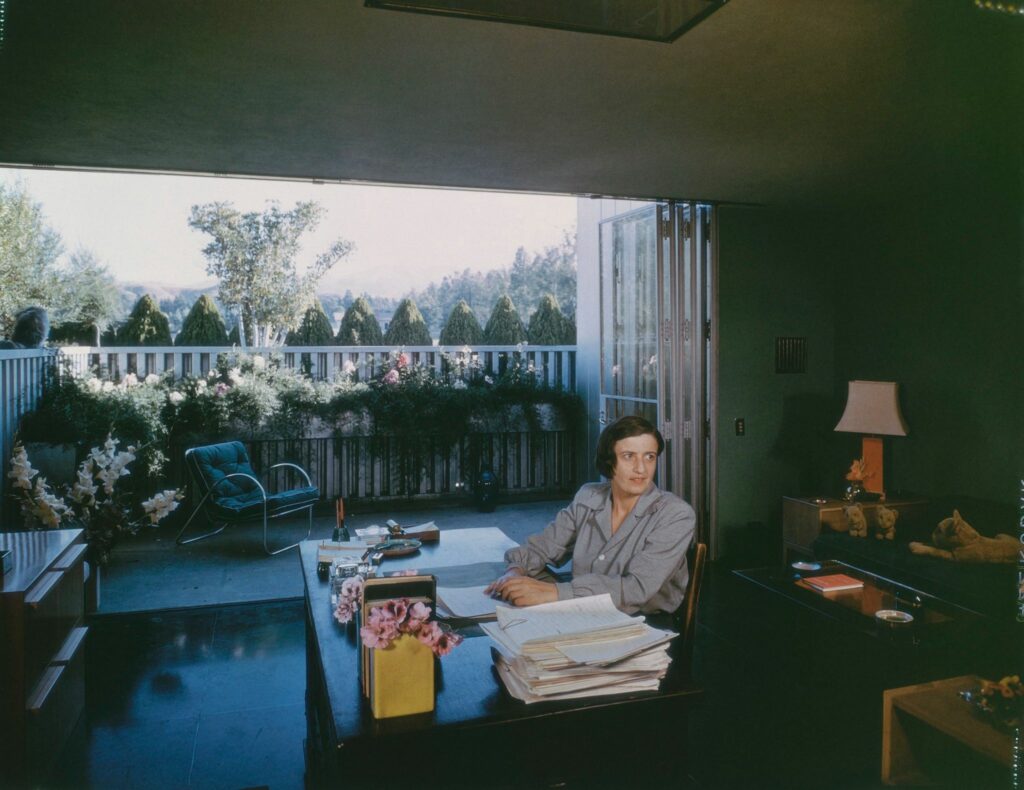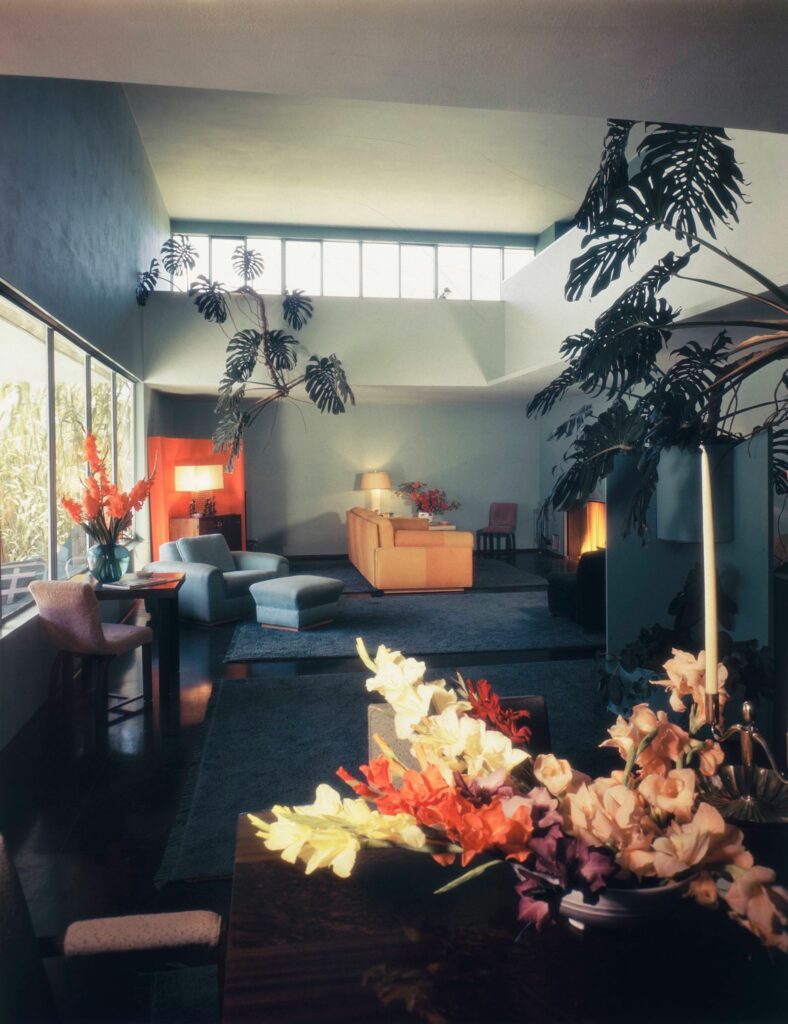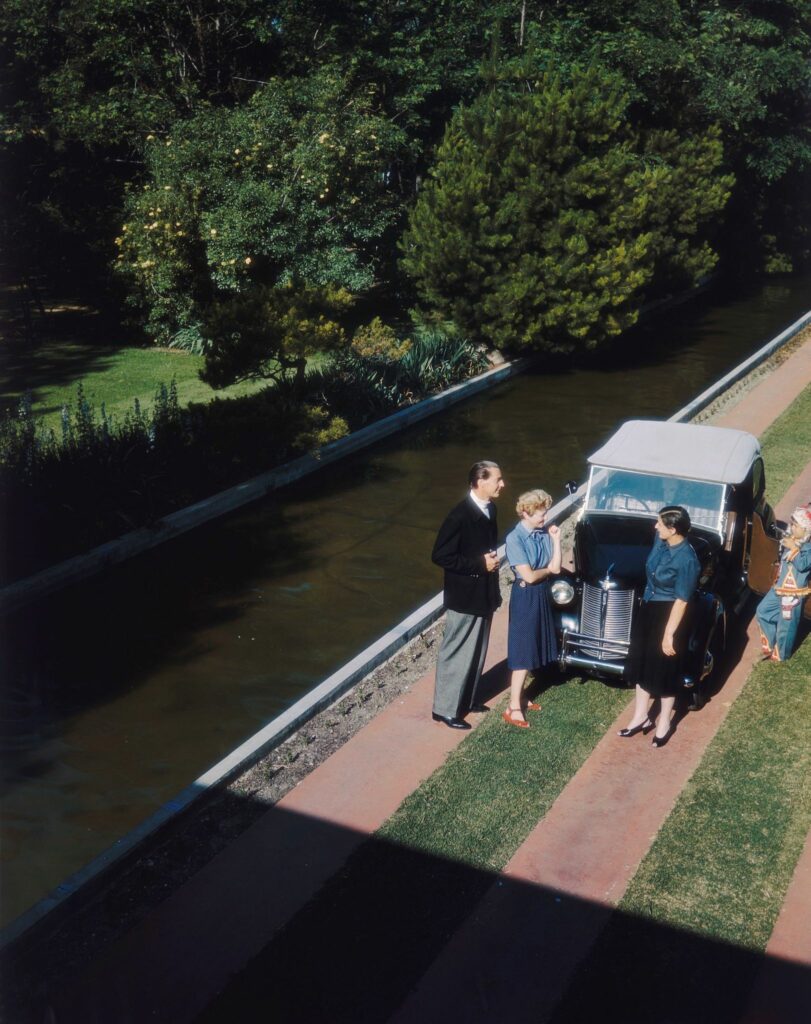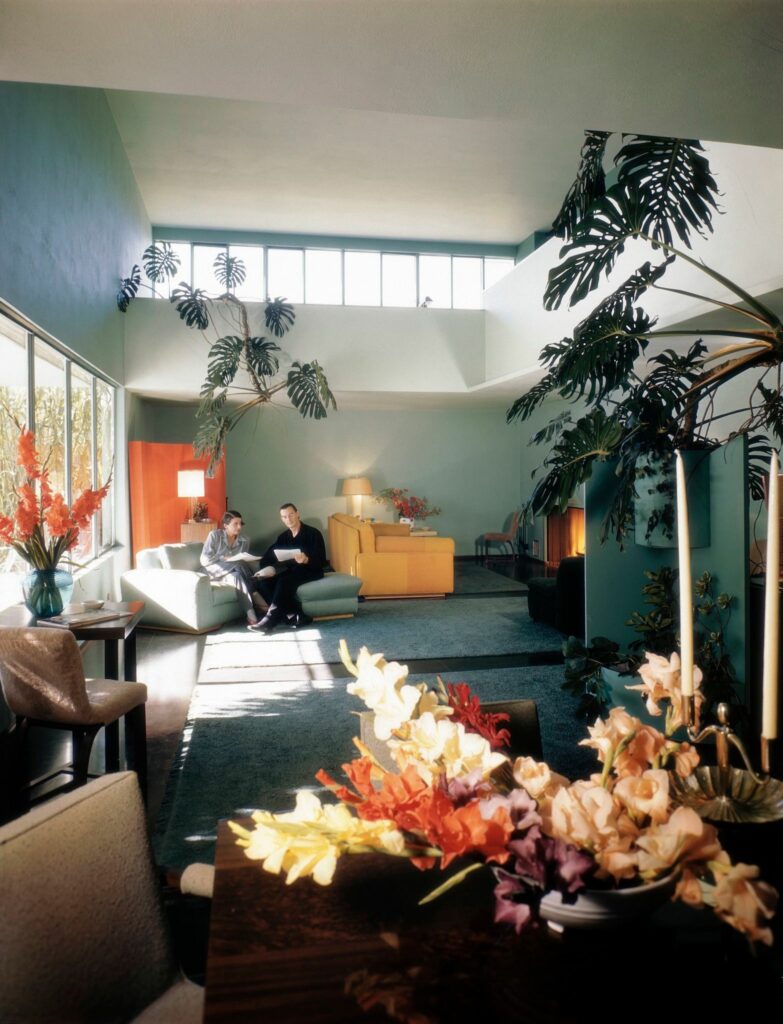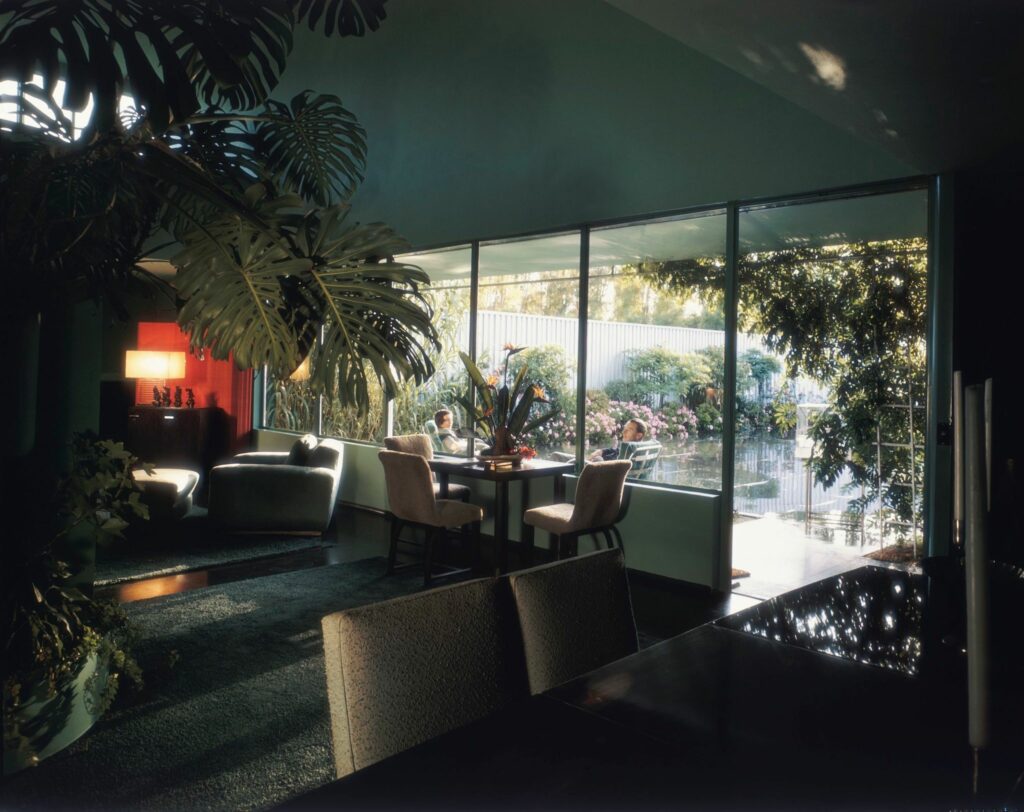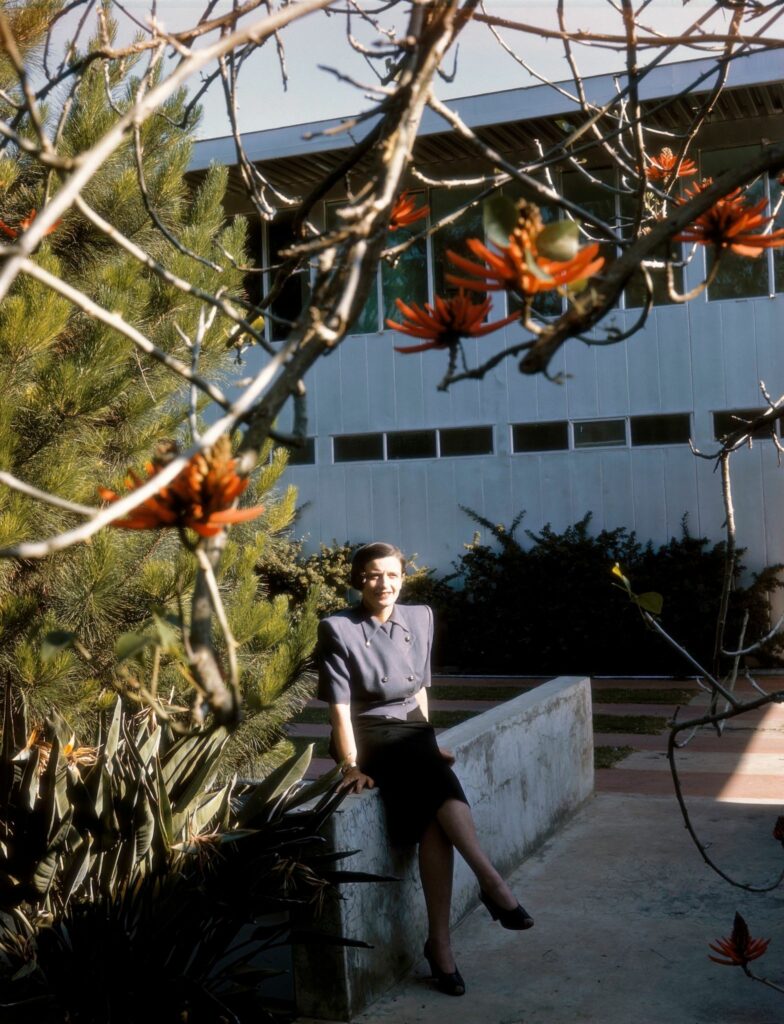Josef von Sternberg House (All Steel Residence)
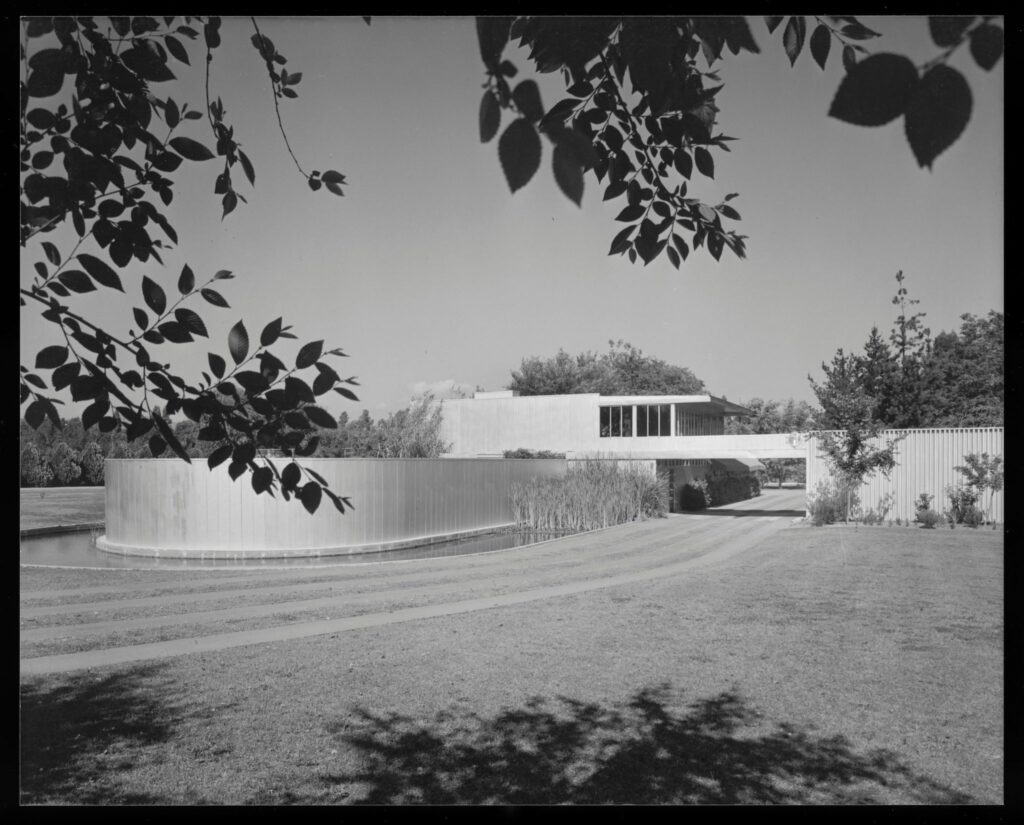
Josef von Sternberg House (All Steel Residence)
In February of 1932, when the well-known, Hollywood director Josef von Sternberg contacted Richard Neutra with his commission for a house, he noted that he would have made the request far sooner, did he not “dislike creating anything permanent in this part of the world.” Perhaps paradoxically, Neutra’s design and materials promised a house that would indeed be long-lasting, but the home was demolished in 1971.
Neutra approached the project in an unusual way, designing curved walls that conform with a twelve-foot moat that encircles the property, guaranteeing the house’s physical and metaphorical distance from its surroundings. This steel wall and the steel, glass, and mirrors used in the building itself, combined with an elaborate and brightly illuminated electrical plan, lent a quality of hard reflectivity to the space. Even the building itself was painted silver, and Neutra selected a particular type of glass—opal flash glass—because it diffused light well, disguising the source of the illumination.
Visitors approached the house from the south along a drive lined by eucalyptus trees and a second moat that led to a port cochere which would have been illuminated at night by a recessed ribbon of soffit lights. Once inside, the visitor entered a two-story living room, paved in black Terrazzo. The room opened onto the “hypaethral room,” a Greek reference to a space open to the sky or without a roof, through wide windows and glassed sliding doors. By extending steel decking to the roof joists, Neutra was able to make this glassed expanse even wider. Yet while Neutra’s buildings are typically integrated with the landscape, for the von Sternberg house, the use of opaque, eight-foot walls thwarted this connection. Instead, this outdoor room resembled a movie set in its contrived nature, including the plan to cool it with an artificial rain.
In addition to these entertaining spaces, the ground floor only had a single bedroom, a studio, two rooms dedicated to staff, a narrow gallery, and two garage spaces, one large enough to accommodate a Rolls Royce. Upstairs, living spaces, a master bedroom suite, and a balcony offered views of the entire estate to the south, east, and north. More immediately, these spaces overlooked an extensive pool on the roof that was populated by tropical fish.
According to a story told by Neutra’s favored contractor, Fordyce “Red” Marsh, Neutra once took a group of people to visit the house after it had been purchased by its second owner, the writer Ayn Rand. Rand rushed past Neutra and embraced Marsh as “the physical embodiment of Howard Roark,” the hero architect of her novel, The Fountainhead.
Adapted from Neutra – Complete Works by Barbara Lamprecht (Taschen, 2000), p. 118.
Project Detail
Year Built
1935–36
Project Architect
Richard Neutra
Client
Josef von Sternberg
Location
Northridge, CA
Current Status
Demolished

